There really is no such thing as a bad time of year to target redfish on fly in South Carolina's Low Country, but autumn is by far my favorite. Redfish are particularly unique because, throughout the year, they offer the angler many different opportunities to pursue them in sight casting situations. Examples include flood tide tailing fish, low tide schools, fish crushing bait, floating fish in the grass, tailing fish on oysters, and even belly crawling fish in super shallow mud flats. These are all situations you will encounter while fishing in the Low Country, but the fall is the only time of year you can see it all in one day.
The months of September, October, and November are far and away the three best months of the year to experience everything the Low Country has to offer when it comes to redfishing. This is the time of year when the weather is cooling down, shrimp are moving into the flats, fiddler crabs are going crazy in the spartina grass, and redfish take advantage of it every second they can in order to fatten up for a long winter. Targeting these fish on the fly isn't always the easiest thing to do, but it is by far the most rewarding way to target them. It's all about being able to see the fish, make the cast, and strip set. The experience of sight fishing is the ultimate experience when fly fishing and the plethora of sight fishing opportunities that redfish present are what makes them such a special species.
During the autumn months, days on the water are based on the low and high tides and most often you can fish both within an 8 hour day.
Low Tide Fish
Low tide fish get schooled up in large numbers on shallow water mud flats where they can stay away from predators such as dolphins and sharks. While these fish are schooled up it is very easy to target them with a fly because there a plenty of hungry fish patrolling the flats. Poling shallow water flats boats in 8-10 inches of water is key, as muddy bottoms makes wading almost impossible. These flats also tend to hold lot of stingrays, and oyster shells. It is also important to approach schools as quietly as you can. Recommended casting distance is typically around 50-60 feet. If you're able to keep to this distance, you'll avoid spooking schools with the boat and have a more productive day.
The low tide fish in the fall sometimes seems almost magical. Tailing, rolling, flashing, and thrashing any bait that comes into sight. Watching these fish work in their natural environment is like a painting of life and always seems to amaze anybody who sees it. The cooler air and water temperatures have a lot to do with why the fish are so active this time of year. It envigorates the fish and helps them display some of their amazing energy while exploding on bait. Redfish are much more aggressive in the fall because of that perfect medium of water temperature and it often seems that any fish over 25 inches will put you in your backing. Shrimp and bait patterns work best at low tide but even topwater patterns can work if you get into active fish chasing shrimp. Recommended patterns include the Crafty Shrimp, Johns LC Shrimp, EP Minnow, Pole Dancer, any type of gurgler, Crease Fly, and my favorite the Black Mamba.

High/Flood Tide Fish
High tide or flood tide fish are also in active feeding mode during the fall months in the Low Country. Redfish will gorge on fiddler crabs during every tide which presents them a chance, which produces lots of tails for us anglers to throw at. Flood tide, tailing redfish are fish that crawl up onto short spartina grass flats and dig their noses in the mud to feed on fiddler crabs. With their heads tilted down, their tails stick out of the water. These are typically singled off fish and also some of the most aggressive fish as they are so focused on feeding. These fish are often pursued on foot, as the short spartina grass flats they are feeding on have a hard bottom and make it easy to wade and even closely approach a tailing fish.
Flood tide Redfish in the Low Country always seems to be most people's favorite way to catch redfish because of how challenging it can be casting to singled off, actively feeding fish. Having the ability to wade for these fish makes it additionally unique. Fishing from the boat during these tides is also productive and can sometimes allow you to see more fish by covering water faster. We only have a handful of tides every month when you can target these flood tide fish which is another reason its such a special event when fly fishing for Redfish. Crab pattern like the Kung Fu Crab, Merkin, Redfish Toad, Fools Gold, and Black Mamba all work great during the flood tides. Just make sure whatever you use has a weed guard to protect from getting caught in the spartina grass, as it's always a bummer spooking a fish by catching the grass on your strip in.
Moving On
All in all the fall is the best time of year to experience every kind of Redfishing the South Carolina Low Country has to offer, but the chase continues throughout the year. During the winter months we are strictly fishing low tides in gin clear water after giant schools of fish. During the spring and summer we start to fish both low and high tides again, but with the hot weather it can sometimes limit you to early morning and late afternoons when the fish are more active. In the Low Country, excellent opportunities to pursue redfish on the fly exist year round and can allow you to experience so many different sight casting situations. But, again -- if you want to experience it all in one day -- then come down during the fall months and you will see quite a show.
Owen Plair was born and raised on the waters of Beaufort, SC. He was fortunate to grow up on the Broad River which is one of the most productive fisheries in the Low Country, leading to his Professional Career as an Orvis Endorsed Fishing Guide starting at the age of 18 years old. Owen currently guides with Beaufort's Bay Street Outfitters.




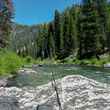
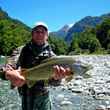













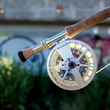





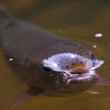

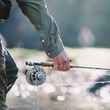
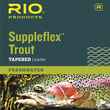
Comments